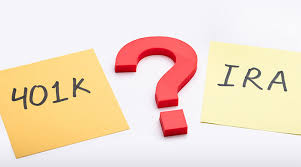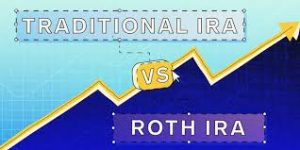When it comes to securing your financial future, few decisions are as crucial as choosing the right retirement savings account. Two of the most popular options that often come head-to-head are the 401(k) and the Individual Retirement Account (IRA).
But which one reigns supreme in the world of retirement savings? This comprehensive guide will dive deep into the 401(k) vs IRA debate, helping you understand the nuances of each option and empowering you to make the best choice for your retirement goals.
Skale Money Key Takeaways
Before we delve into the details, here are the main points you’ll learn from this article:
- The fundamental differences between 401(k) plans and IRAs
- Pros and cons of both 401(k) and IRA accounts
- How to choose between a 401(k) and an IRA based on your personal circumstances
- Strategies for maximizing your retirement savings using these accounts
- Common mistakes to avoid when managing your retirement accounts
- The potential future outlook for 401(k) and IRA accounts
Table of Contents
Understanding 401(k) Plans
A 401(k) is an employer-sponsored retirement savings plan that allows employees to save and invest a portion of their paycheck before taxes are taken out. These plans have become a cornerstone of retirement planning for many Americans.
Key features of 401(k) plans:
- Employer-sponsored: Your employer sets up and administers the plan
- Higher contribution limits: In 2024, you can contribute up to $23,000 annually (or $30,500 if you’re 50 or older)
- Employer matching: Many employers offer to match a percentage of your contributions
- Investment options: Typically include a selection of mutual funds chosen by the employer
- Tax advantages: Contributions are made with pre-tax dollars, reducing your taxable income for the year
There are two main types of 401(k) plans:
- Traditional 401(k): Contributions are made with pre-tax dollars, and you pay taxes on withdrawals in retirement
- Roth 401(k): Contributions are made with after-tax dollars, but withdrawals in retirement are tax-free
Diving into IRAs
An Individual Retirement Account (IRA) is a personal savings account with tax advantages that helps you save for retirement. Unlike 401(k)s, IRAs are not tied to an employer.
Key features of IRAs:
- Individual accounts: You open and manage the account yourself
- Lower contribution limits: In 2024, you can contribute up to $7,000 annually (or $8,000 if you’re 50 or older)
- Wide range of investment options: You can invest in stocks, bonds, mutual funds, ETFs, and more
- Tax advantages: Depending on the type of IRA, you may get tax deductions on contributions or tax-free withdrawals in retirement
There are several types of IRAs:
- Traditional IRA: Contributions may be tax-deductible, and you pay taxes on withdrawals in retirement
- Roth IRA: Contributions are made with after-tax dollars, but withdrawals in retirement are tax-free
- SEP IRA: Designed for self-employed individuals and small business owners
- SIMPLE IRA: A retirement plan for small businesses with 100 or fewer employees
401(k) vs IRA: Head-to-Head Comparison
To help you understand the key differences between 401(k) and IRA accounts, let’s compare them side by side:
| Feature | 401(k) | IRA |
| Sponsorship | Employer-sponsored | Individual |
| Contribution Limits | Higher ($23,000 in 2024) | Lower ($7,000 in 2024) |
| Investment Options | Limited by plan | Wide range |
| Employer Match | Often available | Not applicable |
| Fees | Can be higher | Generally lower |
| Early Withdrawals | Limited options | More flexible |
| Required Min. Distributions | Yes (except Roth) | Yes (except Roth) |
This comparison highlights the key differences between 401(k) and IRA accounts, showing that each has its own strengths and limitations.
Pros and Cons: 401(k) vs IRA
When deciding between a 401(k) and an IRA, it’s crucial to weigh the advantages and disadvantages of each option.
401(k) Pros:
- Higher contribution limits allow you to save more for retirement
- Potential employer match can significantly boost your savings
- Automatic payroll deductions make saving effortless
401(k) Cons:
- Limited investment options compared to IRAs
- Potentially higher fees, which can eat into your returns over time
- Less control over your investment choices
IRA Pros:
- More investment choices give you greater control over your portfolio
- Potentially lower fees can lead to higher long-term returns
- Greater flexibility in managing your account
IRA Cons:
- Lower contribution limits may restrict how much you can save
- No employer match means you miss out on “free money”
- Requires more self-discipline to contribute regularly
Strategies for Maximizing Retirement Savings
To make the most of your retirement savings, consider these strategies:
- Maximize employer match in your 401(k): This is essentially free money, so take full advantage of it
- Consider a mix of pre-tax and Roth contributions: This can provide tax diversification in retirement
- Use an IRA for additional savings or specific investments: If you max out your 401(k) or want more investment options, an IRA can be a great complement
- Regularly review and rebalance your portfolios: This helps maintain your desired asset allocation and manage risk
Who Should Choose a 401(k)?
A 401(k) might be the better choice for:
- Employees with generous employer matches: Don’t leave free money on the table
- High-income earners who want to save more: Higher contribution limits allow for greater savings
- Those who prefer hands-off investing: Limited investment options can simplify decision-making
Who Should Choose an IRA?
An IRA might be the better option for:
- Self-employed individuals or those without access to a 401(k): IRAs provide a tax-advantaged way to save for retirement
- Investors who want more control over their investments: IRAs offer a wider range of investment options
- Those looking for potentially lower fees: IRAs often have lower administrative costs
Combining 401(k) and IRA: The Best of Both Worlds
For many people, the best approach is to use both a 401(k) and an IRA. Here’s how you can combine them effectively:
- Maximize employer match in your 401(k), then contribute to an IRA
- Use your 401(k) for pre-tax savings and a Roth IRA for tax diversification
- Leverage your IRA for investments not available in your 401(k)
By using both accounts, you can maximize your savings potential and create a more diversified retirement strategy.
Common Mistakes to Avoid
When managing your retirement accounts, be sure to avoid these common pitfalls:
- Not contributing enough to get the full employer match in your 401(k)
- Ignoring fees and expenses, which can significantly impact your long-term returns
- Failing to diversify your investments across different asset classes
- Not rebalancing your portfolio regularly to maintain your desired asset allocation
- Taking early withdrawals, which can result in penalties and lost growth potential
Future Outlook: 401(k) vs IRA
As we look to the future, several trends could impact the 401(k) vs IRA landscape:
- Potential changes in contribution limits for both 401(k)s and IRAs
- Introduction of new types of retirement accounts or savings vehicles
- Shifts in tax policies that could affect the benefits of different retirement accounts
Stay informed about these potential changes to make the best decisions for your retirement savings strategy.
Conclusion
In the 401(k) vs IRA showdown, there’s no one-size-fits-all winner. The best choice depends on your individual circumstances, including your employment situation, income level, and investment preferences.
Both 401(k)s and IRAs offer valuable benefits for retirement savers, and many people find that using a combination of both accounts provides the most comprehensive retirement strategy.
Remember, the most important factor in your retirement savings success is not which account you choose, but that you start saving early and consistently. Whether you opt for a 401(k), an IRA, or both, the key is to make regular contributions and invest wisely for the long term.
FAQs
Can I contribute to both a 401(k) and an IRA?
Yes, you can contribute to both a 401(k) and an IRA in the same year. However, your ability to deduct traditional IRA contributions may be limited if you’re covered by a workplace retirement plan.
What happens to my 401(k) if I change jobs?
You typically have several options: leave it with your former employer, roll it over to your new employer’s plan, roll it over to an IRA, or cash it out (though this often incurs penalties and taxes).
How do I choose investments within my 401(k) or IRA?
Consider your risk tolerance, time horizon, and overall financial goals. Many people opt for a diversified mix of stock and bond funds. Target-date funds, which automatically adjust your asset allocation as you approach retirement, can be a good option for hands-off investors.
Are there penalties for withdrawing money early from a 401(k) or IRA?
Generally, yes. Withdrawals before age 59½ typically incur a 10% penalty in addition to regular income taxes, though there are some exceptions.
How do I roll over a 401(k) to an IRA?
Contact the financial institution where you want to open the IRA. They can guide you through the process, which typically involves transferring the funds directly from your 401(k) to the new IRA to avoid potential taxes and penalties.
Author: Cosmas Mwirigi
Cosmas Mwirigi is an established freelance writer with over five years of experience and the founder of Skalemoney.com. Cosmas Mwirigi has been published on PV-Magazine, Slidebean, Bridge Global, Casinos.com, Gambling.com, and Reverbico among many other websites.
Cosmas Mwirigi is an expert writer in iGaming, B2B, SaaS, Finance, digital marketing and Solar renewable energy. To contact him for his services, connect with him on his LinkedIn
![]()




